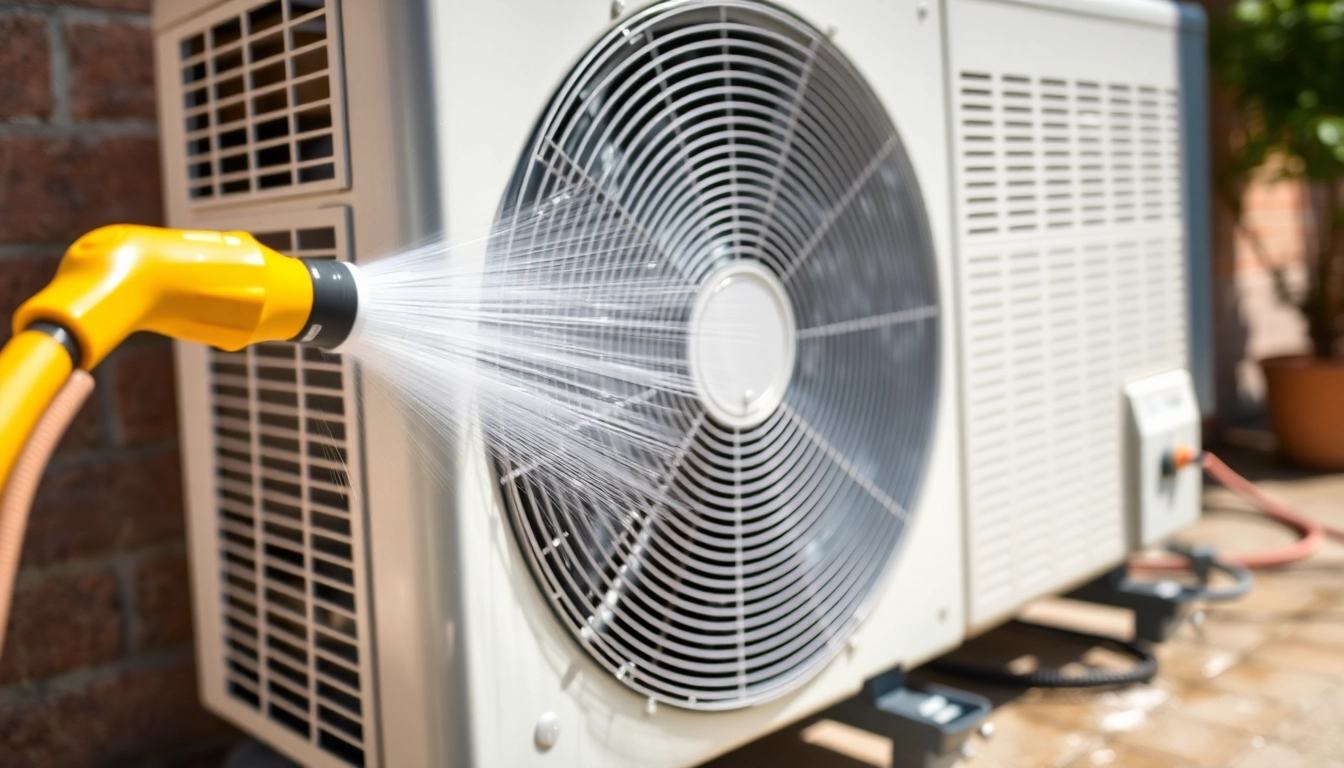Understanding Your AC System
Air conditioning systems are essential for maintaining a comfortable indoor environment, especially during the hot summer months. Understanding how your AC system works is the first step in ensuring its efficiency and longevity. Among the crucial components of an air conditioning unit is the condenser, which plays a vital role in the cooling process. In this guide, we will focus on how to clean the AC condenser effectively.
Components of an AC Unit
An air conditioning system consists of several key components: the evaporator coil, compressor, condenser coil, expansion valve, and refrigerant. The condenser is usually located outside the home and is responsible for expelling heat absorbed from the indoor air into the atmosphere. The refrigerant circulates through these components, absorbing and releasing heat to achieve the desired indoor temperature.
Importance of a Clean Condenser
A clean condenser is critical for the efficient operation of your AC unit. When dust, dirt, and other debris accumulate on the condenser coils, they obstruct airflow and reduce the unit’s ability to dissipate heat. This can lead to higher energy consumption, increased wear and tear, and potentially costly repairs. Regular cleaning not only enhances efficiency but also extends the lifespan of your system.
Common Issues Caused by Dirt Build-Up
Several issues can arise from neglecting to clean your AC condenser:
- Reduced Efficiency: A dirty condenser forces your AC to work harder, leading to increased energy bills.
- Overheating: Clogged coils can cause overheating, resulting in compressor failure.
- Decreased Lifespan: Regular strain from a dirty condenser can significantly reduce the lifespan of your unit.
- Increased Humidity: Poor airflow can lead to humidity issues indoors, making your living space uncomfortable.
Tools and Supplies Needed
Before embarking on the cleaning process, it’s essential to gather the right tools and supplies. This will ensure a smooth operation and effective cleaning.
Essential Cleaning Tools
- Soft-Bristle Brush: This is used to gently clean the fins of the condenser without damaging them.
- Hose with a Spray Nozzle: A garden hose is effective for rinsing the coils after applying cleaning solutions.
- Vacuum Cleaner: A vacuum can help remove loose debris accumulated around the unit.
- Spray Bottle: This is useful for applying cleaning solutions directly to the coils.
Recommended Cleaning Solutions
When it comes to cleaning solutions, you can either purchase a commercially available coil cleaner or make your own. A mixture of water and mild dish soap (such as Dawn) is effective for basic cleaning. For tough grime, consider using a specialized coil cleaner, which will foam up and lift dirt from the coils.
Protective Gear: Safety First
Safety should always be a priority during maintenance tasks. Be sure to wear gloves to protect your hands, goggles to shield your eyes from debris, and a mask if you are sensitive to dust and allergens.
How to Clean AC Condenser: A Step-by-Step Process
Preparation Before Cleaning
Preparation is key for an efficient cleaning session. Start by turning off the power to your AC unit at the disconnect or the main breaker. This will prevent any risk of electrocution during the cleaning process. Clear any debris like leaves, branches, or dirt around the unit to gain easy access for cleaning.
Cleaning the Fins and Coils
Once you have prepared the area, follow these steps to clean the condenser:
- Remove Loose Debris: Use a vacuum cleaner or soft-bristle brush to remove any loose dirt or debris from the fins and coils.
- Apply Cleaning Solution: Mix your cleaning solution in a spray bottle and apply it generously to the coils. Allow it to sit for a few minutes to loosen any tough grime.
- Rinse Thoroughly: Using the hose, spray the condenser inside out to remove the cleaning solution and dirt. Ensure that the rinsing is thorough to avoid any residue being left behind.
- Clean the Surrounding Area: After the cleaning, make sure to also clear any debris from the surrounding area to ensure unobstructed airflow.
Finishing Touches for Optimal Performance
After cleaning, inspect the fins for any bending or damage. If any fins are bent, use a fin comb to straighten them. This will help maintain proper airflow and efficiency. Finally, ensure that the unit is dry before turning the power back on.
Maintenance Tips for Long-Term Care
Regular maintenance is crucial for the performance and longevity of your AC system. Here are some essential tips to keep your condenser in good condition.
Regular Cleaning Schedule
Establish a regular cleaning schedule for your AC condenser. It is recommended to clean the condenser at least twice a year, ideally before the start of the summer season and after the fall when leaves and debris can accumulate around the unit.
Signs Your AC Needs Cleaning
Be aware of the signs that indicate your AC may need cleaning:
- Increased energy bills without any changes in usage.
- Unusual noises coming from the unit, indicating that it is working harder than normal.
- Weak airflow or insufficient cooling in your home.
Tips to Enhance Condenser Lifespan
Enhancing the lifespan of your AC condenser involves more than just cleaning. Consider the following tips:
- Keep Surroundings Clear: Maintain a clear area around the condenser to facilitate airflow. Ensure that plants and debris are at least two feet away.
- Install a Weather Cover: During the off-season, consider covering the condenser to protect it from the elements.
- Schedule Professional Inspections: Having your system inspected by a professional HVAC technician at least once a year can help catch any potential issues early.
When to Call a Professional
While regular cleaning and maintenance can be performed by most homeowners, there are times when it is essential to call a professional.
Signs of Major Issues
Look out for signs that may indicate the need for professional help:
- Foul odors emanating from the unit, which may indicate electrical or mechanical issues.
- Leaking refrigerant, which can be dangerous and requires immediate attention.
- Frequent cycling or failures even after cleaning.
Cost-Benefit Analysis of Professional vs DIY
While performing your own maintenance can save costs, sometimes the expertise of a trained technician can prevent more significant expenses down the line. Consider the complexity of the problem, your comfort level with DIY maintenance, and the potential costs associated with neglecting an issue.
Finding Qualified HVAC Technicians
When seeking a professional, ensure they are licensed, insured, and have good reviews. Referrals from friends or family can also be helpful in identifying trustworthy technicians in your area.



